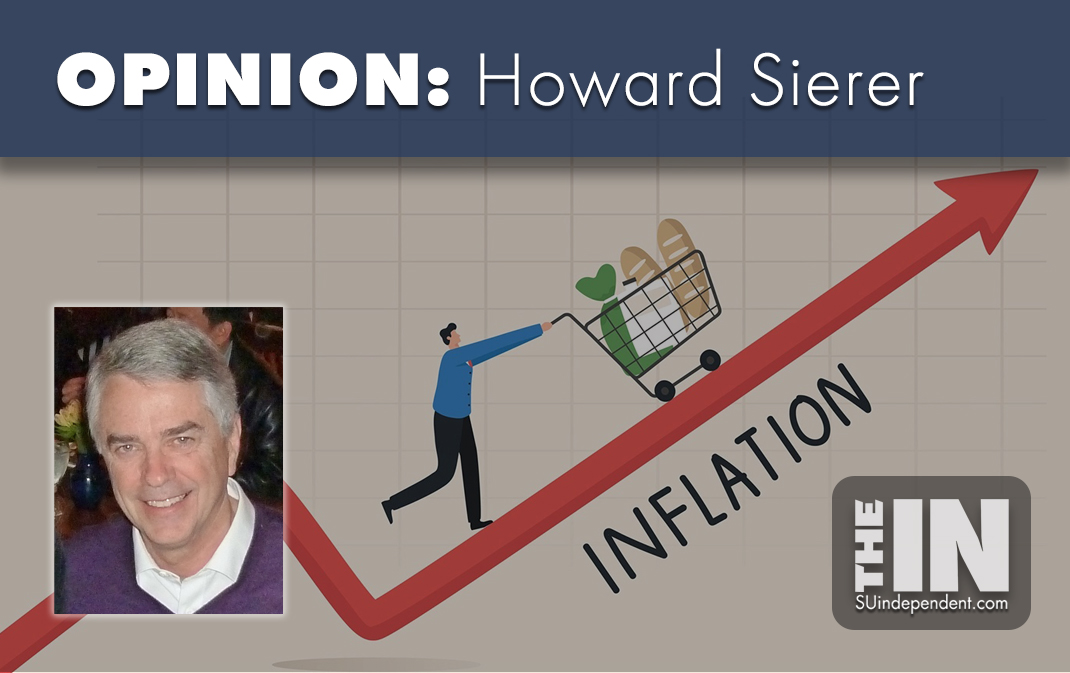
The Things that Inflation Measures Miss
– By Howard Sierer –
According to the Biden administration and its fellow travelers in the leftist media, our economy couldn’t be better. Jobs are plentiful, stock prices are up, and inflation is down. What’s not to like?
Consumers living outside the Washington Beltway have a very different view. In an early March CBS News poll, just 23% said their personal financial situation has gotten better in the last few years compared to 55% who say it has worsened (29% say no change).
The culprit is inflation, and Biden and Congressional Democrats are clearly to blame. While the headline Consumer Price Index (CPI) has dropped from a peak annual increase of 9% in the 12 months ending in June 2022 to 3.5% in March of this year, overall prices are still about 20% higher than they were when Biden took office and the CPI has resumed climbing in this year’s first three months.
Adding to consumer woes, the CPI fails to capture the impact of some things consumers see every day. A NielsenIQ survey of grocery store prices for common items like milk, eggs, flour, dish soap, cereal, vegetables and other things you most likely have on your shelves shows that that portion of the CPI has risen 37% since 2019.
The term “shrinkflation” was coined several years ago to describe how we are paying the same price for noticeably smaller quantities of the same thing. Many of us can relate to a 2022 article illustrating how packaged goods items in the grocery aisle were shrinking while prices remained the same. Americans may be paying the same prices for some items as they did a year ago, but they are often getting less and the CPI doesn’t reflect that at all.
Unbelievably, the CPI shows that airline fares fell 9.4% during 2023. That sounds good until you consider that the CPI heavily weighs the “lowest available fare” for a trip, the one typically offered by budget airlines. But their customers often have to pay $50 extra if they don’t want to be assigned seat 32B across from the toilet plus $30 more for carry-on luggage. Flyers also get less legroom and are charged for beverages or snacks. Some travelers may like these differentiated prices, but most don’t like paying more for the same services they used to get as part of the ticket cost.
How about video streaming services, most of which had been losing money and have begun to insert ads to cover their shortfall. Then they began charging a premium for the ad-free service you were getting before. For example, Disney+’s ad-free service rose from $11 a month to $14, a 27% increase. Likewise, shrinkflation has come to Amazon Prime accounts. To stream movies and TV shows without ads, the company began charging an extra $2.99 a month – $35.88 a year –a 20% premium over a standard Prime subscription.
Yet the CPI shows that prices for video streaming services have risen a mere 2% over the last year because it measures only the cost of basic streaming services, the ones in which providers now include ads. If you don’t want to pay more, you will have to suffer through commercials.
Auto insurance rates are up 20.3% over the last year, according to the CPI, because costs for vehicle repair, parts and rental as well as litigation have shot up. Insurance premiums typically rise with a lag because they have to be approved by state regulators. Claims costs continue to increase, so prices aren’t finished rising.
Healthcare providers are renegotiating contracts with insurers and those insurers are starting to pass through their increasing costs. Employer health-plan premiums are expected to rise this year by about 6% on average, compared to roughly 3% to 4% over the previous decade. Average family premiums for employer-sponsored plans grew 7% last year.
Shockingly, the CPI shows health-insurance prices dropping 27.1% since December 2022. How can that be? The Labor Department calculates health-insurance inflation using a convoluted method that relies on insurer retained earnings as a proxy for prices. Only a Labor Department bureaucrat can explain this one.
The Federal Reserve’s preferred inflation gauge—the personal consumption expenditures index—tries to take into account so-called substitution effects. But even if the Fed is accounting for substitution, when you buy chicken because you can’t afford beef, you’re still suffering another form of shrinkflation.
Liberal economists and Democrats are telling Americans they should be happy because headline inflation has come down. “Our Economy Isn’t ‘Goldilocks.’ It’s Better,” read the headline of Paul Krugman’s New York Times column in February. Maybe it looks that way to him from 35,000 feet when he’s flying business class. Not so when you’re crammed into seat 32B.



